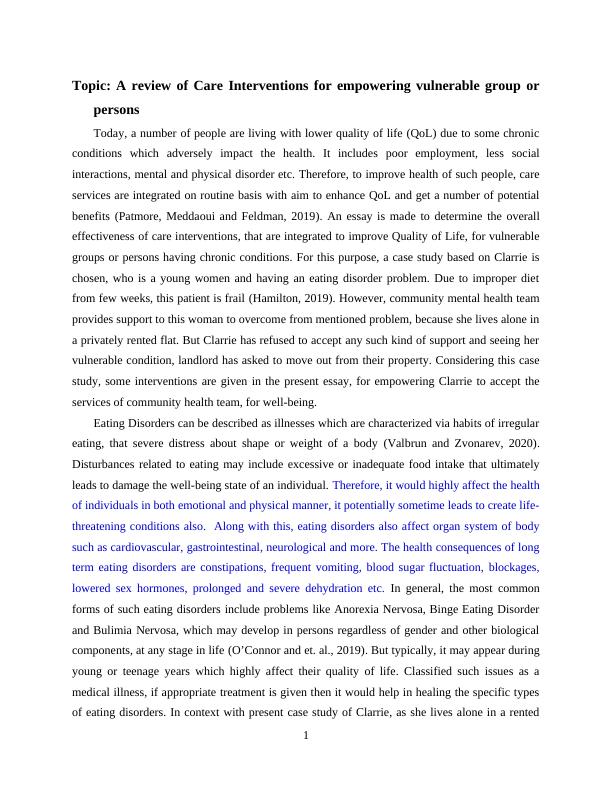Care Interventions for Empowering Vulnerable Groups with Chronic Conditions
Added on 2023-01-13
9 Pages3076 Words58 Views
End of preview
Want to access all the pages? Upload your documents or become a member.
Eating Behaviour and Eating Disorders: A Case Study
|9
|2793
|38
Case Study and Analysis (Eating Disorder) - Anorexia nervosa
|15
|4049
|269
Health Promotion and Disease Prevention Practices: A Case Study
|10
|2980
|1
Nursing in Chronic Illness | Report
|8
|2222
|20
Mental Health - Dementia Case Study Assignment
|10
|3074
|29
Case Study Diagnosis in Mental Health Illness
|6
|1776
|438



